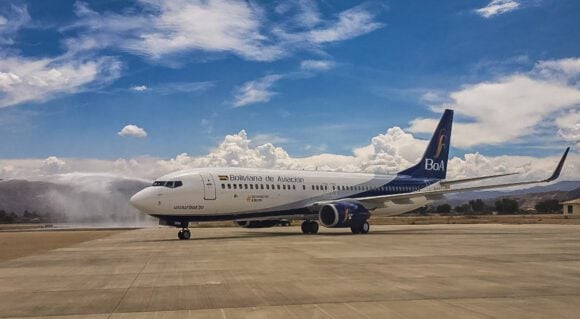
102459917 2966664076744325 294999175890731008 n
Wizz Air expects to return to profitability in the current financial year 2024 and reach pre-pandemic levels, having reported a slightly lower net loss for FY23. The Hungarian low-cost airline’s FY24 target “will be driven by low cost, operational excellence, including continued high aircraft utilization, productivity improvements, and increased flight completion factors,” it reported on Thursday. Wizz Air targets return to pre-pandemic levels in FY24.
Wizz reported a €-535.1 million net loss compared to €-642.5 million in FY22. The operating loss was not very different at €-466.8 million versus €-465.3 million. EBITDA turned positive to €134.3 million compared to €-23.3 million in the previous year.
Revenues increased by 134.2 percent to €3.896 billion from €1.663 billion. Of this, €2025 billion is from passenger tickets and €1.871 billion from ancillary revenues, which reached €37 per passenger and are among the highest in the world. Total revenues per available seat kilometer (RASK) was €3.98 cents, which is higher than the €3.95 cents in pre-pandemic year FY20. On March 31, the airline had €1.529 billion in liquidity, with net debt of €3.893 billion.
Over 51 million passengers carried
The airline carried 51.1 million passengers, up 89 percent over the previous financial year that runs from April to March. The load factor was up by almost ten percent to 87.8 percent, while utilization hours per aircraft also increased: by 44.3 percent to 11.08 hours. Pricing and new markets contributed strongly to the higher RASK. The airline did well in its core Central Eastern European markets, Western Europe, and the Middle East with new routes by the parent airline and subsidiary Wizz Air Abu Dhabi.
Total expenses increased to €4.363 billion, up from €2.129 billion. Fuel costs were up by 201 percent to €1.954 billion, due to higher prices and more flying. None-fuel costs increased by 62.7 percent to €2.408 billion, but costs per available seat kilometer (CASK) were eight percent lower to €2.58 cents.
“The effects of fuel price increases and structural capacity issues at airports remained features throughout the year, but we are mitigating these through decisive actions which helped to improve ex-fuel cost performance. As anticipated, our H2 F23 ex-fuel cost per available seat kilometer (‘CASK’) was eight percent lower year-over-year and only 9 percent higher versus F20, even accounting for our continued investment and the inflationary environment affecting our cost base.”
Wizz reiterates targets for FY24
Wizz Air reiterates its FY 24 targets that it already mentioned in January but provided some extra color. ASKs should increase by thirty years over FY22, the load factor should get to over ninety percent, and aircraft utilization must recover to pre-pandemic levels. The airline targets a productivity increase of 25 percent. With sixty percent of fuel hedged, Wizz thinks it is well-protected against increases. Overall, CASKs should also return to FY20 levels.
Except for further growth in Europe, Wizz also wants to grow more in the Middle East. The number of destinations from the United Arab Emirates will increase to 39, including that of Wizz Air Hungary. In Saudi Arabia, the carrier is offering 24 routes this year.
The airline said in its earnings release: “Wizz Air expects ASK capacity to grow +30 percent year-on-year in F24, with current expectations of H1 and H2 growth rates at similar levels. This will again be the top growth rate for any of the major European airlines, with our ex-fuel unit cost expected to continue to decline year on year. Trading performance has been strong in the first fiscal quarter with attractive pricing and load factors above 90 per cent.”
For the full year, Wizz says: “The Company’s net profit is expected to be in a range between €350 and €450 million in F24, subject to the absence of adverse exogenous events such as an incremental impact from the war in Ukraine, delivery delays, or similar. This guidance is dependent on the revenue performance for the all-important summer period as well as the second half of F24, a period for which the Company, like most airlines, currently has limited visibility. We are now well placed to continue to drive profitable growth through the rest of the decade and beyond.”
Deliveries are confirmed
Wizz Air expects to take delivery of 41 Airbus A320neo family aircraft in FY24 compared to 35 in FY23. The airline says the deliveries have been confirmed by Airbus, so capacity should turn out as planned. With all deliveries, the fleet should grow to 205 aircraft in FY24, up from 179 in FY23. It will consist of 123 A321neo’s, 42 A321ceo’s, 34 A320ceo’s, and six A320neo’s.
Views: 25



